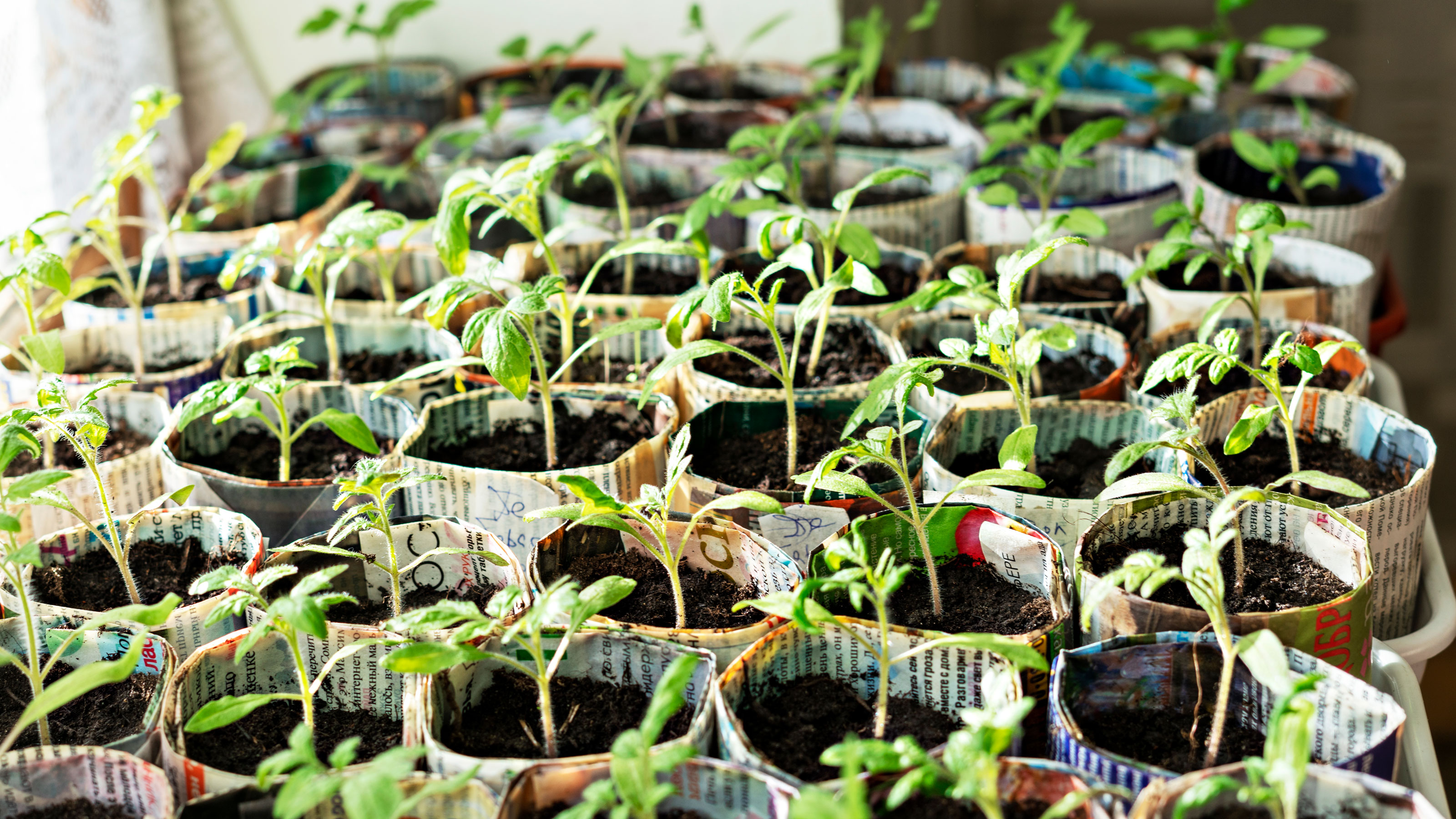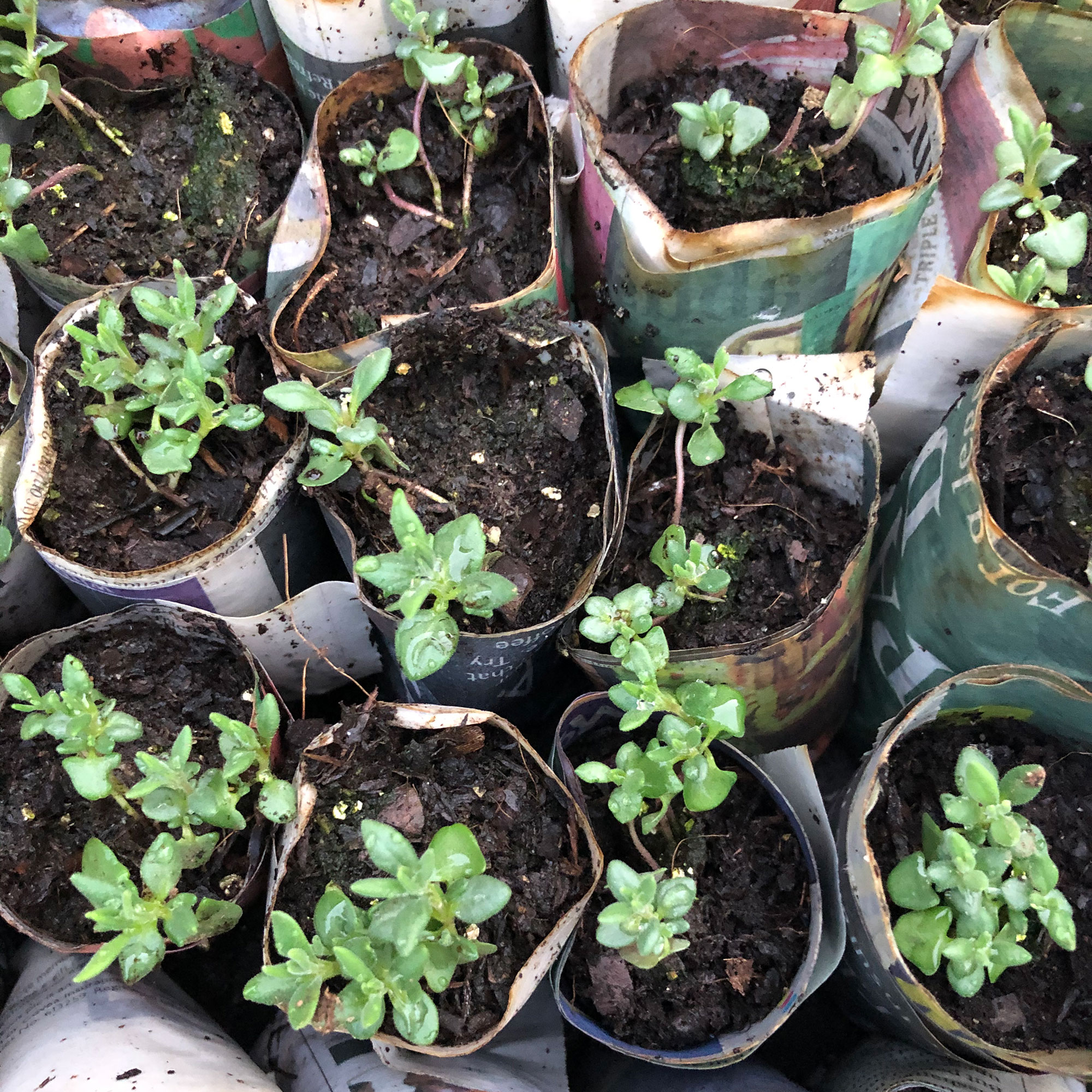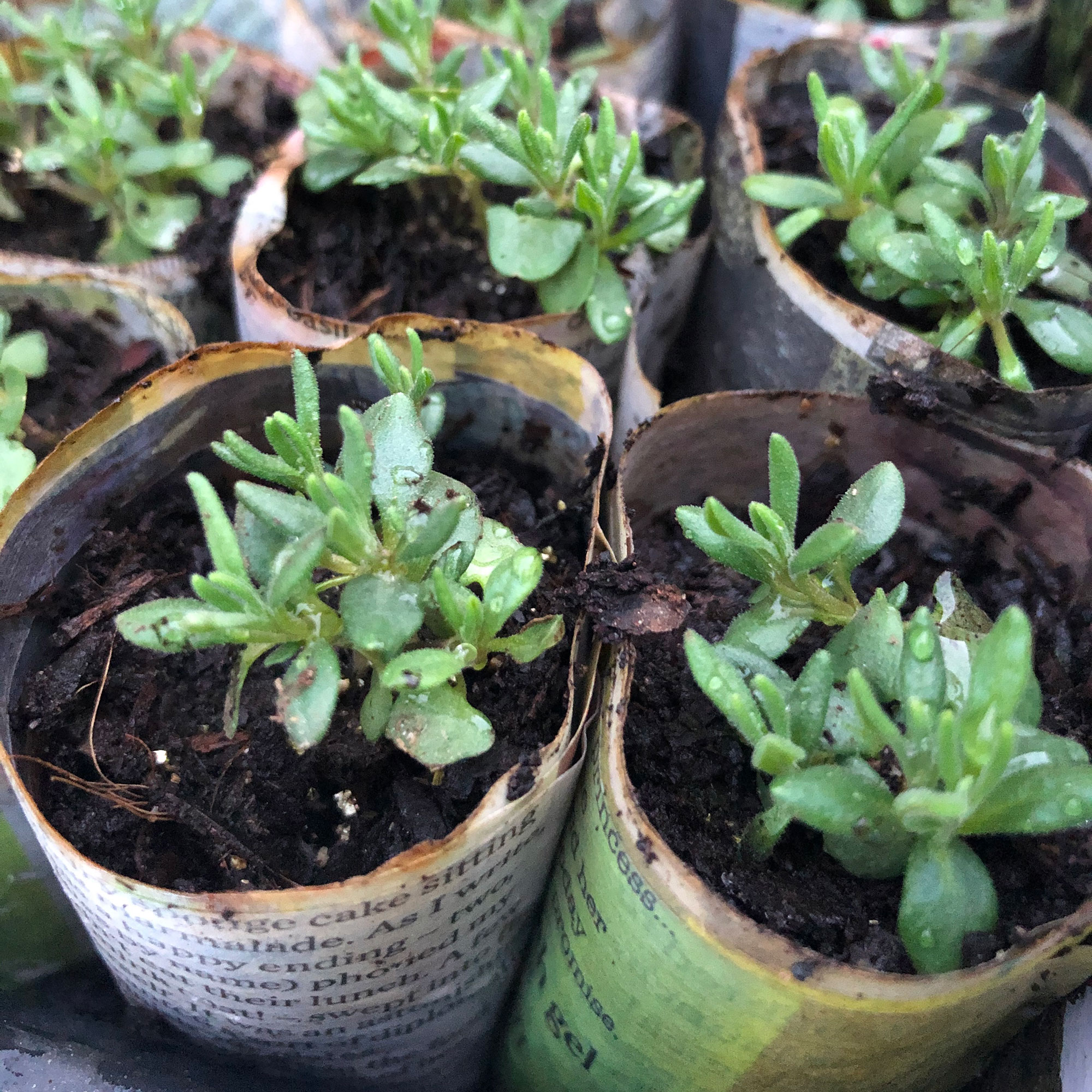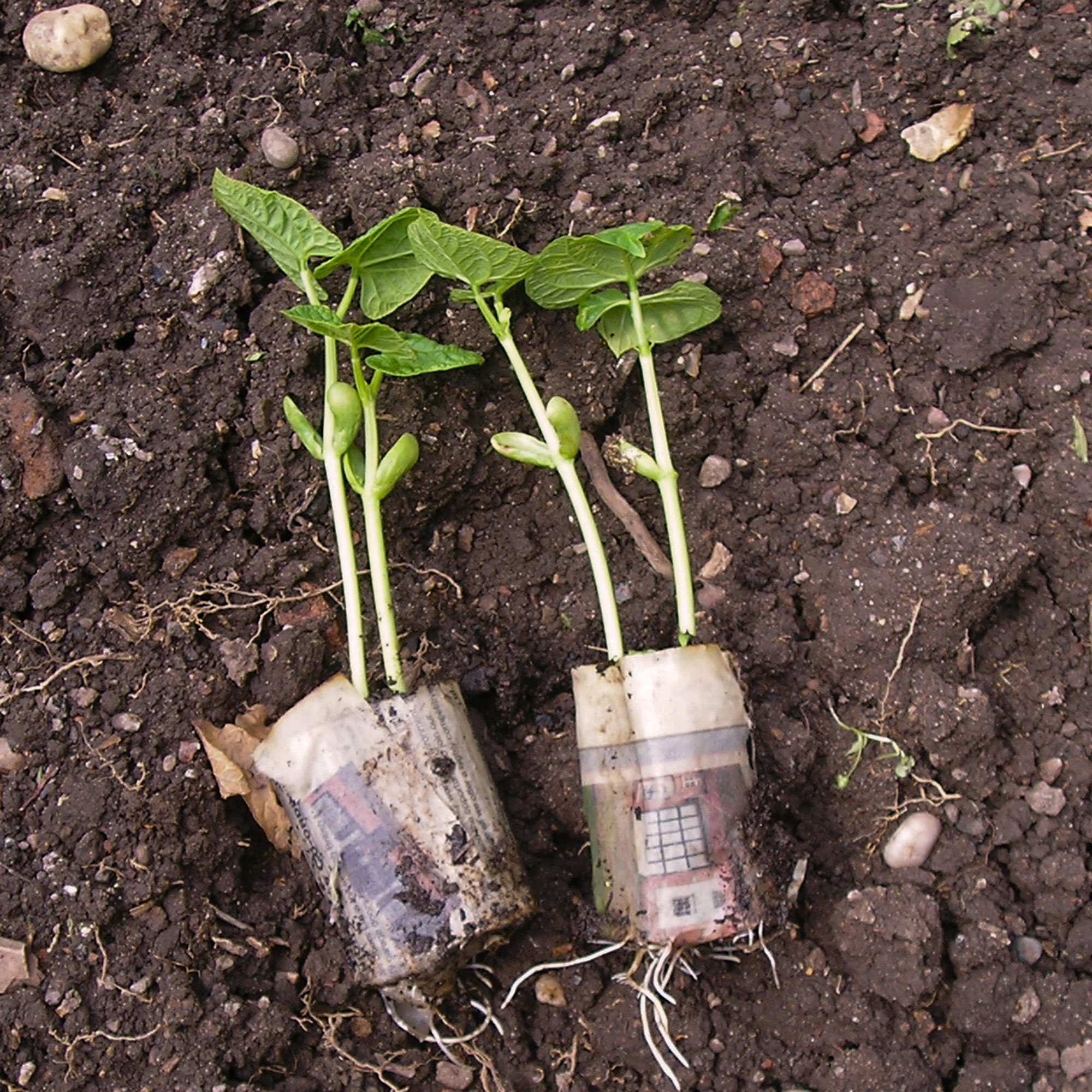How to make seed pots out of newspaper for free - never waste money on seedling trays again
If you're growing your own this year make sure you give this hack a go


Making seed pots out of newspaper is so simple and satisfying, and it’s great for the environment as you’ll cut down the paper you send for recycling and avoid plastic waste too.
If you're looking to grow your own vegetables from seed this year, or any type of plant you will need something to start them off in. Seedling trays can vary from £1.50 to £10 depending on the material, however, if you have a newspaper subscription save your money as you can make them yourself at home.
'We all need to start reducing our plastic use – and sometimes it’s surprising how much plastic we can use as gardeners,' says Emma O’Neill, head gardener for sustainable gardening charity Garden Organic. 'Plastic is considered a non-renewable resource and its manufacture and disposal destroys and poisons our environment. Black plastic pots in particular – which you buy potted up with plants at the garden centre - cannot be recycled.'
So when you’re looking for advice on how to sow seeds, start with what you have at home – spare newspapers and a cylindrical object such as a jar.
What’s more, making newspaper seed pots is easy. 'The main benefits are that they are biodegradable and cost nothing,' says Julia Leakey, product designer/range development at garden company Crocus.
How to make seed pots out of newspaper
Take a newspaper you no longer need and turn yesterday’s news into sustainable seed pots, perfect for giving seedlings away to friends and a brilliant idea if you want to garden sustainably.

What you'll need
- Black and white newspaper - the organic gardening experts at the Eden Project in Cornwall say don’t use shiny, coloured paper for newspaper seed pots as it may contain damaging heavy metals that could drain into your soil and cause contamination.
- A small glass jar – you can also use a plastic pot or any other suitable cylindrical object. Have a look around your shed and kitchen to find something of just the right size.
- A tray to stand your newspaper seed pots on – re-purpose a plastic tray you already have, or choose a metal or wooden tray which be re-used time and again.
Step-by-step
We asked the organic gardening experts at the Eden Project in Cornwall to share their step-by-step guide to making newspaper seed pots:
1. Lay the paper flat
First, take a full sheet of black and white newspaper and lay it out flat.
2. Fold lengthwise
Then fold the paper in half lengthwise twice to form a long, narrow strip.
3. Take a jar
Select the best jar or other cylindrical object you can find. Avoid choosing one too big as the finished newspaper seed pot won’t be able to support itself when it’s full of compost and has been watered.

4. Get ready to roll
Lay the jar on its side and place it on one end of the strip of paper. Roll the newspaper around the jar. The jar is used only as a form to roll the paper around. About half of the strip of paper should overlap the open end of the glass. The overlapping paper will form the base of the newspaper seed pot.
6. Make the base
Now push the ends of the overlapping paper into the open end of the jar. This step doesn’t have to be neat. Just stuff the paper into the jar. Next, pull the jar out of the newspaper pocket so you have your actual newspaper pot in your hand.
7. Seal the bottom of the pot
Push the bottom of the jar into the newspaper cup, squashing the folded paper to flatten it down. This important step will seal the bottom of your pot. Once the pot has been filled with soil, trust us, the bottom will be secure.

8. Pop seeds in
Final step - pull the jar out and you have a finished paper pot, ready to pop your seeds in and wait for them to grow. Don’t forget to label them. Lolly sticks do a great job and that’s another recycling feather in your cap.
How long with a newspaper pot last?
Newspaper seed pods will support your seedlings for around four to six weeks by which time they can be popped straight into the ground. The paper will disintegrate within a couple of weeks. The roots of the seedlings will then be free to spread out and take hold.

FAQs
Do newspaper pots last?
They do last! 'You can grow many different plants in newspaper seed pots, but I find they work best for annuals such as cosmos, zinnia, antirrhinum, and sunflower,' says Emma.
A major benefit of newspaper pots is that you can make them as you need them. So if you’re thinking about when to start off seedlings throughout the seasons, including when to plant wildflower seeds, you can avoid buying plastic pots and trays that will take up space and add plastic waste (potentially) to landfill.
When your seedlings are ready, the whole pot can be planted out into the ground when it’s ready, causing minimal root disturbance, Emma adds: 'This means the plants gets off to a better start and there’s no check in growth.'
How do you make seed-starting cups by folding a sheet of paper?
It’s very simple. Basically, you take a sheet of newspaper, fold it in half lengthwise twice to form a long, narrow strip. Wrap the strip around a cylindrical object such as a glass jar, tucking in the ends underneath to form a sturdy base. Then remove the jar - or whatever you’re using - and you have an instant and biodegradable seed-starting cup, made by recycling newspaper.
For a small spend, you could also invest in a paper pot maker, such as this one from garden products company Crocus, £10.19, which makes pots in three sizes, 3cm, 4.75cm and 6cm in diameter. You simply cut your newspaper into strips and roll around the ‘potter’, folding the overlap underneath and pressing into the base mould with a twist.
What can go wrong with newspaper seed pots?
Newspaper seed pots can go mouldy or biodegrade before you’re ready to plant them out.
'Over-watering may cause newspaper pots to collapse like this,' warns Julia. 'Also don’t let your newspaper pots sit in water and get soggy bottoms. With this in mind, water carefully and you should be fine.'
To avoid over-watering, Emma advises only watering your seedlings from below, directly into the tray rather than into their newspaper pots. “To check if a pot has become dry and needs watering, pop your finger into the soil at the top of the pot, 1cm deep,” she says. “If it’s wet, leave them to dry out for a bit longer. Also try to keep air circulating between the pots by setting them slightly apart.'
Get the Ideal Home Newsletter
Sign up to our newsletter for style and decor inspiration, house makeovers, project advice and more.

Jayne Dowle is an award-winning freelance gardening, homes and property writer who writes about everything from swimming ponds to skyscraper apartments, for publications including Sunday Times Home, Times Bricks & Mortar, Grand Designs, House Beautiful and The Spectator. Awarded the Garden Journalist of the Year accolade at the Property Press Awards in 2021, she has a degree in English Language and Literature from the University of Oxford and a lifelong love of homes, interiors and gardens.
-
 Wood drenching is the calming new twist on the colour drenching trend – here’s how to make the look work in your home
Wood drenching is the calming new twist on the colour drenching trend – here’s how to make the look work in your homeIt’s easier than ever to embrace natural materials
By Maddie Balcombe
-
 Aldi is launching a £200 day bed with four different features - its sleek design is suited to the whole family
Aldi is launching a £200 day bed with four different features - its sleek design is suited to the whole familyYou don't want to miss out on this Specialbuy
By Kezia Reynolds
-
 How to set up a drip watering system that saves water and a lot of effort
How to set up a drip watering system that saves water and a lot of effortKeep your plants hydrated (and your water bill down) with this clever garden watering solution
By Natalie Osborn